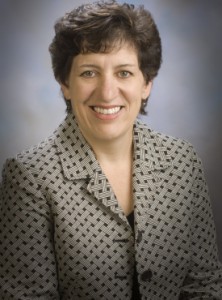Preview video from the Research Safety Culture Program website.
A year after its launch, Colorado State University’s Research Safety Culture Program — an innovative initiative that includes an interactive website and videos designed to promote safety and compliance in labs on campus — has taken home some prestigious hardware.
The Research Safety Culture Program through the Office of the Vice President for Research was honored by the Campus Safety, Health, and Environmental Management Association — CSHEMA — a national organization for environmental, health and safety professionals in higher education.
Watch the videos
Check out the award-winning videos as well as the website by visiting research.colostate.edu/research-safety-culture.
CSHEMA awarded the Research Safety Culture Program with the first place award for Marketing Campaign as well as second place for Innovation – Safety Culture during a virtual conference on July 15.
The website, which includes more than a dozen videos, was the brainchild of OVPR Research Safety Culture Coordinator Anthony Appleton, who received support from VPR Communications and Events Director Lauren Klamm, Digital Media Specialist Ty Betts, Web Specialist Emma Mannino, Creative Services Brand Strategist Lindsay Connors, and Video Producer Ben Ward.
“It’s a really big deal,” Appleton said. “To be recognized on a national level — I’m just blown away that we were able to capture this in the first year of the program. To have this national recognition to bring this new program to the forefront means that Colorado State University is showing that research safety can be done well.”
The videos cover a variety of safety and compliance issues, ranging from how to work safely in a biosafety cabinet to messages from CSU leadership such as Vice President for Research Alan Rudolph.
A message from Vice President for Research Alan Rudolph.
Appleton said the idea for the videos started when he was a postdoctoral fellow at Stanford University, where he helped produce a report on research safety culture. One of the findings he said was that many researchers weren’t aware of the resources available to them.
When Appleton arrived at CSU in January 2019, he connected with key research offices such as the Research Integrity and Compliance Review Office, Environmental Health Services, Biosafety Office, and Risk Management and Insurance.
“The safety culture program is not reinventing anything at CSU,” he said. “It is actually increasing the visibility, increasing the accessibility and being a program that can help you find a way to get to ‘yes’ to do your research as safely as possible without any type of negative ramifications.”
A national leader

According to Ellen Fisher, assistant vice president for strategic initiatives, not many universities have a dedicated position involved solely in promoting research safety culture.
Fisher said the idea for a research safety culture program came to her in 2014 when she was chair of the Department of Chemistry, adding she was looking to change researchers’ and administrators’ perceptions of compliance and safety.
“If we can instill in our students and all of our researchers this idea that we have a culture of safety — and not so much a culture of compliance for compliance sake — we will be in a much better place,” she said. “We can graduate students who will be much more competitive in the workforce because they would already be trained at a safety level that industry is looking for.”
Fisher likened the research safety culture to the same precautions that people take when cycling, hiking or any of the popular outdoor activities in Colorado. Wearing safety goggles in a lab is much like wearing a helmet on a bike, she said.
With the research safety videos, Fisher said the project has helped humanize CSU’s compliance professionals to encourage person-to-person interactions. “It brings that sense that we care about you as a researcher,” she said. “We want you to be safe.”

While other universities might have some training videos, Appleton said CSU is a leader in terms of making these types of resources easily accessible to researchers without a face-to-face meeting.
Appleton and the team designed the videos to provide researchers with critical safety and compliance information in an easy-to-digest format that’s sharable across online platforms and social media.
Appleton said video production started in July 2019, with the team interviewing key personnel on research safety and compliance. At first, some people were hesitant to be on camera, but he explained their support produced something special.
“It was important for me to reintroduce the people behind research support at CSU,” Appleton said. “When you understand that these are people here to help you, you interact with them more and interact with them better.”
Appleton credited Fisher for making the research safety culture program at CSU a reality and also expressed gratitude for all of the departments that have worked with him, adding that the culture at CSU made it all possible.
The research safety culture program “didn’t invent RICRO or EHS or Risk Management and Insurance,” he said. “This program made them more approachable to our researchers, and I’m very proud that the heart and soul of this award is being the ganache between those who support research and those who do research.”